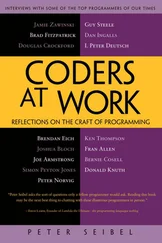Peter Siebel - Practical Common Lisp
Здесь есть возможность читать онлайн «Peter Siebel - Practical Common Lisp» весь текст электронной книги совершенно бесплатно (целиком полную версию без сокращений). В некоторых случаях можно слушать аудио, скачать через торрент в формате fb2 и присутствует краткое содержание. Год выпуска: 2005, ISBN: 2005, Издательство: Apress, Жанр: Программирование, на английском языке. Описание произведения, (предисловие) а так же отзывы посетителей доступны на портале библиотеки ЛибКат.
- Название:Practical Common Lisp
- Автор:
- Издательство:Apress
- Жанр:
- Год:2005
- ISBN:1-59059-239-5
- Рейтинг книги:4 / 5. Голосов: 1
-
Избранное:Добавить в избранное
- Отзывы:
-
Ваша оценка:
- 80
- 1
- 2
- 3
- 4
- 5
Practical Common Lisp: краткое содержание, описание и аннотация
Предлагаем к чтению аннотацию, описание, краткое содержание или предисловие (зависит от того, что написал сам автор книги «Practical Common Lisp»). Если вы не нашли необходимую информацию о книге — напишите в комментариях, мы постараемся отыскать её.
Practical Common Lisp — читать онлайн бесплатно полную книгу (весь текст) целиком
Ниже представлен текст книги, разбитый по страницам. Система сохранения места последней прочитанной страницы, позволяет с удобством читать онлайн бесплатно книгу «Practical Common Lisp», без необходимости каждый раз заново искать на чём Вы остановились. Поставьте закладку, и сможете в любой момент перейти на страницу, на которой закончили чтение.
Интервал:
Закладка:
However, this is still far from being a complete database. You can probably think of plenty of features to add, such as supporting multiple tables or more elaborate queries. In Chapter 27 we'll build an MP3 database that incorporates some of those features.
The point of this chapter was to give you a quick introduction to just a handful of Lisp's features and show how they're used to write code that's a bit more interesting than "hello, world." In the next chapter we'll begin a more systematic overview of Lisp.
4. Syntax and Semantics
After that whirlwind tour, we'll settle down for a few chapters to take a more systematic look at the features you've used so far. I'll start with an overview of the basic elements of Lisp's syntax and semantics, which means, of course, that I must first address that burning question. . .
What's with All the Parentheses?
Lisp's syntax is quite a bit different from the syntax of languages descended from Algol. The two most immediately obvious characteristics are the extensive use of parentheses and prefix notation. For whatever reason, a lot of folks are put off by this syntax. Lisp's detractors tend to describe the syntax as "weird" and "annoying." Lisp, they say, must stand for Lots of Irritating Superfluous Parentheses. Lisp folks, on the other hand, tend to consider Lisp's syntax one of its great virtues. How is it that what's so off-putting to one group is a source of delight to another?
I can't really make the complete case for Lisp's syntax until I've explained Lisp's macros a bit more thoroughly, but I can start with an historical tidbit that suggests it may be worth keeping an open mind: when John McCarthy first invented Lisp, he intended to implement a more Algol-like syntax, which he called M-expressions . However, he never got around to it. He explained why not in his article "History of Lisp." [36] http://www-formal.stanford.edu/jmc/history/lisp/node3.html
The project of defining M-expressions precisely and compiling them or at least translating them into S-expressions was neither finalized nor explicitly abandoned. It just receded into the indefinite future, and a new generation of programmers appeared who preferred [S-expressions] to any FORTRAN-like or ALGOL-like notation that could be devised.
In other words, the people who have actually used Lisp over the past 45 years have liked the syntax and have found that it makes the language more powerful. In the next few chapters, you'll begin to see why.
Breaking Open the Black Box
Before we look at the specifics of Lisp's syntax and semantics, it's worth taking a moment to look at how they're defined and how this differs from many other languages.
In most programming languages, the language processor—whether an interpreter or a compiler—operates as a black box: you shove a sequence of characters representing the text of a program into the black box, and it—depending on whether it's an interpreter or a compiler—either executes the behaviors indicated or produces a compiled version of the program that will execute the behaviors when it's run.
Inside the black box, of course, language processors are usually divided into subsystems that are each responsible for one part of the task of translating a program text into behavior or object code. A typical division is to split the processor into three phases, each of which feeds into the next: a lexical analyzer breaks up the stream of characters into tokens and feeds them to a parser that builds a tree representing the expressions in the program, according to the language's grammar. This tree—called an abstract syntax tree —is then fed to an evaluator that either interprets it directly or compiles it into some other language such as machine code. Because the language processor is a black box, the data structures used by the processor, such as the tokens and abstract syntax trees, are of interest only to the language implementer.
In Common Lisp things are sliced up a bit differently, with consequences for both the implementer and for how the language is defined. Instead of a single black box that goes from text to program behavior in one step, Common Lisp defines two black boxes, one that translates text into Lisp objects and another that implements the semantics of the language in terms of those objects. The first box is called the reader , and the second is called the evaluator . [37] Lisp implementers, like implementers of any language, have many ways they can implement an evaluator, ranging from a "pure" interpreter that interprets the objects given to the evaluator directly to a compiler that translates the objects into machine code that it then runs. In the middle are implementations that compile the input into an intermediate form such as bytecodes for a virtual machine and then interprets the bytecodes. Most Common Lisp implementations these days use some form of compilation even when evaluating code at run time.
Each black box defines one level of syntax. The reader defines how strings of characters can be translated into Lisp objects called s-expressions . [38] Sometimes the phrase s-expression refers to the textual representation and sometimes to the objects that result from reading the textual representation. Usually either it's clear from context which is meant or the distinction isn't that important.
Since the s-expression syntax includes syntax for lists of arbitrary objects, including other lists, s-expressions can represent arbitrary tree expressions, much like the abstract syntax tree generated by the parsers for non-Lisp languages.
The evaluator then defines a syntax of Lisp forms that can be built out of s-expressions. Not all s-expressions are legal Lisp forms any more than all sequences of characters are legal s-expressions. For instance, both (foo 1 2)and ("foo" 1 2)are s-expressions, but only the former can be a Lisp form since a list that starts with a string has no meaning as a Lisp form.
This split of the black box has a couple of consequences. One is that you can use s-expressions, as you saw in Chapter 3, as an externalizable data format for data other than source code, using READ to read it and PRINT to print it. [39] Not all Lisp objects can be written out in a way that can be read back in. But anything you can READ can be printed back out "readably" with PRINT .
The other consequence is that since the semantics of the language are defined in terms of trees of objects rather than strings of characters, it's easier to generate code within the language than it would be if you had to generate code as text. Generating code completely from scratch is only marginally easier—building up lists vs. building up strings is about the same amount of work. The real win, however, is that you can generate code by manipulating existing data. This is the basis for Lisp's macros, which I'll discuss in much more detail in future chapters. For now I'll focus on the two levels of syntax defined by Common Lisp: the syntax of s-expressions understood by the reader and the syntax of Lisp forms understood by the evaluator.
S-expressions
The basic elements of s-expressions are lists and atoms . Lists are delimited by parentheses and can contain any number of whitespace-separated elements. Atoms are everything else. [40] The empty list, () , which can also be written NIL , is both an atom and a list.
The elements of lists are themselves s-expressions (in other words, atoms or nested lists). Comments—which aren't, technically speaking, s-expressions—start with a semicolon, extend to the end of a line, and are treated essentially like whitespace.
Интервал:
Закладка:
Похожие книги на «Practical Common Lisp»
Представляем Вашему вниманию похожие книги на «Practical Common Lisp» списком для выбора. Мы отобрали схожую по названию и смыслу литературу в надежде предоставить читателям больше вариантов отыскать новые, интересные, ещё непрочитанные произведения.
Обсуждение, отзывы о книге «Practical Common Lisp» и просто собственные мнения читателей. Оставьте ваши комментарии, напишите, что Вы думаете о произведении, его смысле или главных героях. Укажите что конкретно понравилось, а что нет, и почему Вы так считаете.








